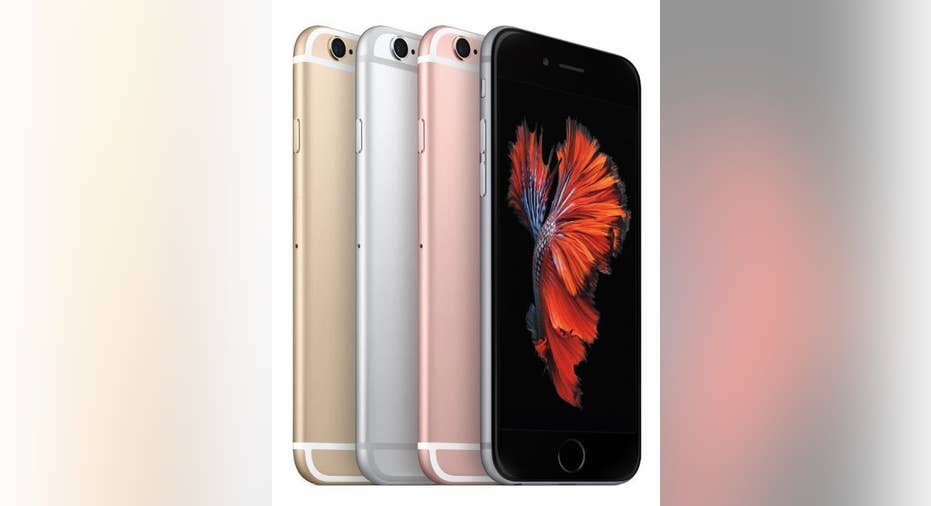Is the iPhone Replacement Cycle Slowing?

Apple is on the verge of reporting a year-over-year decline in iPhone sales for the first time ever. Most Wall Street analysts think that the company sold only 50 million-52 million iPhones last quarter, down from 61.2 million a year earlier.
BTIG analyst Walter Piecyk recently argued in a research note that a slowdown in the upgrade cycle is causing this sales decline. (He isn't the first analyst to make this observation.) Piecyk thinks that this is a secular trend that will continue even after the iPhone 7 launch later this year.
Apple is having trouble replicating the growth it achieved with the iPhone 6. Image source: Apple.
There are some plausible reasons why the iPhone upgrade cycle could be slowing permanently. However, many analysts seem to be overestimating the likely extent of this slowdown.
Death of the subsidized phoneWhen Apple launched the iPhone back in 2007, it did so in partnership with AT&T in the U.S. AT&T subsidized phone purchases -- helping Apple sell more iPhones -- in order to entice customers to sign up for more expensive wireless packages that included data.
Within a few years, the subsidized phone model had become an industry standard in the U.S. -- and to a lesser extent, outside the country. Every two years, iPhone users could upgrade to the latest model while paying only a fraction of the cost of the new device.
However, now that smartphones are ubiquitous in the U.S. and other developed countries, wireless carriers are less keen to shell out hundreds of dollars per user in subsidies. (Indeed, AT&T never wanted to offer subsidies for iPhone upgrades, but it gave in after a wave of customer backlash.)
The result is that wireless carriers like AT&T have either discontinued their subsidy-based smartphone plans or deemphasized them for marketing purposes. This reduces the incentive for customers to automatically upgrade their phones every two years.
Other reasons for the slowing upgrade cycleIn addition to this change in how phones are purchased, smartphone manufacturers are also grappling with the fact that smartphones have become "good enough" for most people. Apple certainly isn't the only manufacturer that's having trouble packing enough compelling new features into each year's model to keep the upgrade cycle going.
A final reason why the pace of iPhone upgrades has slowed is that Apple is increasingly penetrating lower-income markets. As a result, many recent iPhone buyers can't afford to buy a new phone every two years.
Don't ignore cyclical effectsThese factors help explain why fewer iPhone users have upgraded their phones this year. However, analysts (including Piecyk) who are projecting that the upgrade cycle will continue to slow in 2017 are underestimating the cyclicality of iPhone sales.
Some iPhone users may be reluctant to upgrade to the iPhone 6s in case the next iPhone offers big advances. Image source: Apple.
The launch of the iPhone 6 and iPhone 6 Plus in late 2014 sparked a wave of upgrades. For example, 9.8% of the post-paid retail subscriber base at Verizon upgraded just in Q4 2014: the first full quarter after the iPhone 6/iPhone 6 Plus launch. Some of the slowdown in upgrades observed in the past six months or so represents a return to the pre-iPhone 6 trend.
Furthermore, while the iPhone 6s incorporates useful improvements like Apple's new 3D Touch technology, there are no "must-haves" compared to the iPhone 6. It's not clear whether the next iPhone will do any better, but some consumers don't want to buy an "S" cycle model and risk missing out on key new features by a few months.
It's probably unrealistic to expect the upgrade rate to return to the highs of fiscal 2015 again. But it's also unrealistic to expect the upgrade rate to remain as low as it has been during fiscal 2016 -- let alone get worse.
Annual upgrade plans will help, tooAnother factor that could offset the lengthening of iPhone upgrade cycles is Apple's new iPhone Upgrade Program. The iPhone Upgrade Program, available through Apple Stores, bundles an iPhone with two years of AppleCare+ and essentially offers zero-interest financing on the package.
A key feature of the iPhone Upgrade Program is that users can trade in their phone after one year for no extra cost. While Apple only sold a few hundred thousand phones under this program during its first quarter of availability, many wireless carriers are offering similar programs.
iPhone users subscribing to these plans have a strong incentive to upgrade every year. This will add to the pool of demand for new iPhones beginning in the fall. As annual upgrade programs expand -- taking advantage of the vibrant market for used iPhones -- the increase in the "annual upgrader" base should offset the impact of cost-sensitive users holding on to their iPhones longer.
The key takeaway is that between tough comparisons to the iPhone 6 product cycle and users holding out for the iPhone 7, the iPhone upgrade rate has been unusually low this year. Even a modest recovery in iPhone upgrades will drive solid growth for Apple's most important product during the 2017 fiscal year.
The article Is the iPhone Replacement Cycle Slowing? originally appeared on Fool.com.
Adam Levine-Weinberg is long Jan. 2017 $85 calls on Apple. The Motley Fool owns shares of and recommends Apple. The Motley Fool recommends Verizon Communications. Try any of our Foolish newsletter services free for 30 days. We Fools may not all hold the same opinions, but we all believe that considering a diverse range of insights makes us better investors. The Motley Fool has a disclosure policy.
Copyright 1995 - 2016 The Motley Fool, LLC. All rights reserved. The Motley Fool has a disclosure policy.